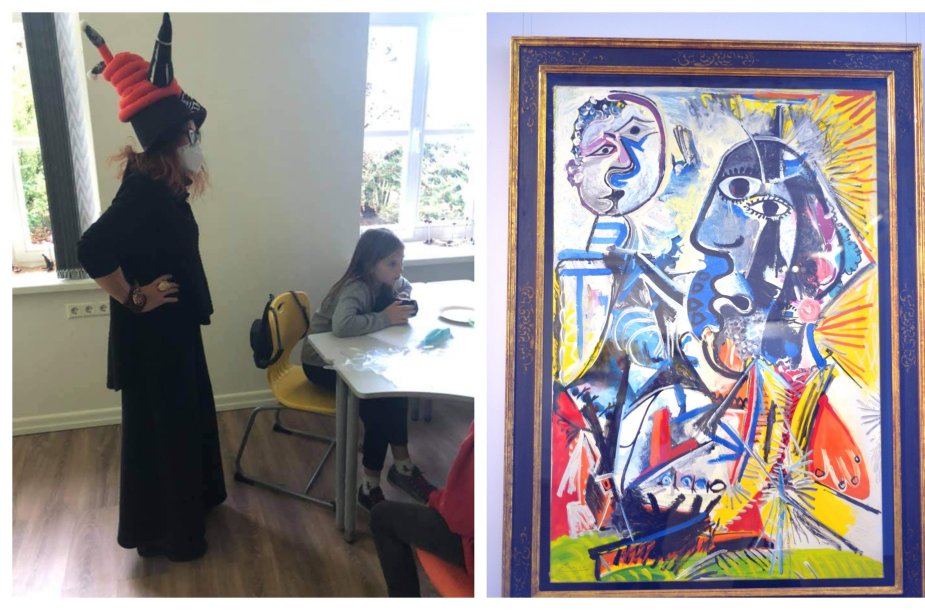
Nida Juozaitienė, a primary school teacher who has been working for more than three decades, calls her work a constant creation, so it is not surprising that when she teaches children mathematics, she not only talks about numbers, but looks for connections with art.
Working in a school that he himself graduated from Plans, God laughs. Nida is well acquainted with this phrase. Although the teacher started believing that she would not work in the same school all her life, she has been educating the beginners of Kaunas Simonas Daukantas Progymnasium for 33 years. “The experience is huge, and all of me, no one else,” the teacher laughs, adding that she respects her work very much, loves it and can’t even imagine anything else. By the way, Nida is not the only long-term teacher at this school – she has three other colleagues who have been working here for a long time. “Although the team is changing, young teachers are coming, but there is a very strong core of like-minded people,” she said.
Explore all topics – not the main goal How have children changed since 1989, when the primary school teacher started working? “It simply came to our notice then. The very first experience after studying at the then Šiauliai Pedagogical University was that I work everything as it should, as if well, but now when I remember working without practice, I start laughing, ”Nida said. – And then the children were receptive, interesting. But there were definitely different tempos and other teaching methods. ”Today, children say they have far more and more diverse opportunities, and they are definitely affected by the online world. In addition, as the teacher noted, children today have a harder time concentrating because there are a lot of distractions around them. They need to be offered a lot of different activities, everything has to change constantly in the lesson.
Now the textbook is just an alternative, an aid, as you can work with any source and tool.
A few decades ago, the main and only teaching aids were a textbook and a notebook. “We were focused on going through certain topics in the textbook,” the interviewee recalled. “Now the textbook is only an alternative, a tool, because you can work with any source and tool.” According to Nida, the teacher used to teach the student, today the child learns himself wizard, advisor. In her search for the benefits of past education, the primary school teacher mentions a higher level of literacy in the first place.
“Now the teacher has to be very structured, to convey the basics to the children,” she said. – Sometimes it is sad about the Lithuanian language, because the level of students’ literacy has decreased. But I understand why it is a lot for children. ”The educator also believes that the child’s assessment in the standardized test program is only partially correct. In her opinion, ticking the boxes does not reveal the child’s abilities, it would be necessary to use more creative and analytical tasks, which are not enough in the tests. “We read excerpts from various works with the children and we have such morning observations during which we discuss what the children have heard,” Nida said. – Children learn to listen to others, respect the opinion expressed, advise, ask questions. In the development of cohesive language, creative tasks have a greater meaning than writing dictations. Of course, I do not underestimate the importance of dictatorships, especially when combined with creative tasks. ”
The teacher also notices some trends. For example, children have difficulty learning and cognition of the world, it is difficult to draw logical conclusions. Therefore, she tries to organize as many experiential activities as possible for her students. A better situation, according to the teacher, when teaching mathematics: “I really like to connect mathematics with art, I lead integrated lessons. For example, we study geometric shapes and get acquainted with the work of the artist Pablo Picasso. Children recognize the same forms not only in art, but also in nature, in other environments. Both earthworms and snails and other living things can be associated with many things. It’s so much more fun to learn, and you can learn a lot more. ”Nida, who is educating an exceptional 24 quarters in her class, could call a few of them gifted. “There have been such children before, but we didn’t know how to recognize them,” she regrets. “You saw that the child was different, not necessarily a great learner.” Another of her pupils was reluctant to follow certain rules, constantly objected, but had non-standard thinking. “And two extraordinary girls are studying in this show. One has special skills in all areas. The other girl is doing better in science – mathematics, cognition of the world.
I also have one very interesting boy, though not very good at learning. There is a girl with exceptional artistic abilities. I also had a girl in the class who wrote great essays, created fairy tales, won prizes in both the city and the republic. Such children need to be seen, allowed to spread, to be encouraged. They should not “disappear” in the senior classes either. I think that we, the teachers, still see something, ”says the teacher. According to the interviewee, it is good that trainings and seminars on how to recognize and educate gifted children are already being organized for teachers, and information can be found for themselves. Sometimes it is sad about the Lithuanian language, because students’ literacy levels have fallen. But I understand why – there is so much for children. According to Nida, even in a weaker learning child, one can see exceptional qualities, each child is unique. When preparing assignments for children, the teacher takes into account children with learning difficulties and higher thinking abilities. Distance learning is no longer intimidating Last school year was marked by an abundance of various trainings for the interviewee. According to her, one of the advantages of quarantine is that the challenges of distance learning have led to significant improvements in information technology skills. “Kids are really well-versed now, they’re fast and ready to innovate. If it were necessary to study again at a distance now, it would not be scary for anyone, ”the teacher remarked. Another important aspect is the good relationship of the teacher with the parents of the students. During the quarantine, she was greatly rescued by the support, advice and cooperation of her parents. Like children, their parents have changed dramatically over the decades at school. Today, they are much more interested in the activities and achievements of their offspring on the school bench. However, even then and now, according to the teacher, the most important thing is to build a relationship based on trust with them, to provide feedback about children, as much information as possible. “Everything happens, but I almost always manage to get along with my parents,” the teacher said. “The teacher must be both tolerant and forward-looking, respond adequately to a wide range of situations.” Now, she is deepening her knowledge of recognizing and educating gifted children not only in the program, but is also constantly interested in the topic.
“Teachers need to explain such things,” she said. – Of course, and the teacher himself must be interested, look for information, because there are such children. And it is very important not to watch them. ”In the Gifted program sponsored by Vytautas Magnus University, she meets a lot of motivated children, who later delve into the topics that interest them very deeply. Gifted children ask a lot of different questions. You’ll see what answers they provide when I ask what a snail could symbolize in Cossos ’work, what questions they have! “It simply came to our notice then. That children get more here than at school learns things that are not in the school curriculum, ”the teacher is convinced. What do she do for herself at Gifted classes? “I teach the Mathematics and Arts module to third graders and Mathematics to fourth graders. I tell and show works by Roberto Delaunay, Pablo Picasso, Francesco del Cossa. We touch a little on the currents of art. You’ll see what answers they provide when I ask what a snail could symbolize in Cossos ’work, what questions they have! I think it’s good that children are looking for connections, learning to appreciate the works themselves. Later, we do a very nice job of mathematics. It is very interesting with these children, ”said Nida, who thinks that mathematics and art can be combined into one discipline, at least in primary school.
